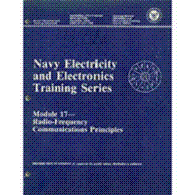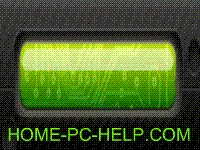Fiber Optic Connectors
A fiber optic connector is a de-mateable device that permits the coupling
of optical power between two optical fibers or two groups of fibers.
Designing a device that allows for repeated fiber coupling without
significant loss of light is difficult. Fiber optic connectors must
maintain fiber alignment and provide repeatable loss measurements during
numerous connections.
Fiber optic connectors
should be easy to assemble (in a laboratory or field environment) and
should be cost effective. They should also be reliable. Fiber optic
connections using connectors should be insensitive to environmental
conditions, such as temperature, dust, and moisture. Fiber optic
connector designs attempt to optimize connector performance by meeting each of these conditions.
Fiber optic connector coupling loss results from the same loss mechanisms described earlier in this chapter. Coupling loss results from poor fiber alignment and end preparation (extrinsic losses), fiber mismatches (intrinsic loss), and Fresnel reflection. The total amount of insertion loss for fiber opticconnectors should remain below 1 dB. Fiber alignment is the critical parameter in maintaining the total insertion loss below the required level. There is only a small amount of control over coupling loss resulting from fiber mismatches, because the loss results from inherent fiber properties. Index matching gels cannot be used to reduce Fresnel losses, since the index matching gels attract dust and dirt to the connection.
Fiber optic connectors can also reduce system performance by introducing modal and reflection noise. The cause of modal noise in fiber optic connectors is the interfering of the different wavefronts of different modes within the fiber at the connector interface. Modal noise is eliminated by using only singlemode fiber with laser sources and only low-coherence sources such as light-emitting diodes with multimode fiber. Fiber optic connectors can introduce reflection noise by reflecting light back into the optical source. Reflection noise is reduced by index matching gels, physical contact polishes, or anti- reflection coatings. Generally, reflection noise is only a problem in high data rate single mode systems using lasers.
Butt-jointed connectors and expanded-beam connectors are the two basic types of fiber optic connectors. Fiber optic butt-jointed connectors align and bring the prepared ends of two fibers into close contact. The end-faces of some butt-jointed connectors touch, but others do not depending upon the connector design. Types of butt-jointed connectors include cylindrical ferrule and biconical connectors.
Fiber
optic expanded-beam connectors use two lenses to first expand and then
refocus the light from the transmitting fiber into the receiving fiber.
Single fiber butt-jointed and expanded beam connectors normally consist
of two plugs and an adapter (coupling device). The picture below shows
how to configure eachplug and adapter when making the connection between
two optical fibers.

Plug-adapter-plug configuration.
Ferrule connectors use two cylindrical plugs (referred to as ferrules), an alignment sleeve, and sometimes axial springs to perform fiber alignment. The picture below provides an illustration of this basic ferrule connector design. Precision holes drilled or molded through the center of each ferrule allow for fiber insertion and alignment. Precise fiber alignment depends on the accuracy of the central hole of each ferrule. When the fiber ends are inserted, an adhesive (normally an epoxy resin) bonds the fiber inside the ferrule.
The fiber-end faces are polished until they are flush with the end of the ferrule to achieve a lowloss fiber connection. Fiber alignment occurs when the ferrules are inserted into the alignment sleeve. The inside diameter of the alignment sleeve aligns the ferrules, which in turn align the fibers. Ferrule connectors lock the ferrules in the alignment sleeve using a threaded outer shell or some other type of coupling mechanism.

Basic ferrule connector design.
As stated before, fiber alignment depends on an accurate hole through the center of the ferrule. Normally, ferrule connectors use ceramic or metal ferrules. The center hole is generally drilled in a metal ferrule. Drilling an accurate hole through the entire metal ferrule can be difficult. To improve fiberalignment, some metal ferrule connectors use precision watch-jeweled centering.
In precision watchjeweled centering, a watch jewel with a precision centered hole is placed in the tip of the ferrule. The central hole of the watch jewel centers the fiber with respect to the axis of the cylindrical ferrule. The watch jewel provides for better fiber alignment, because regulating the hole tolerance of the watch jewel is easier than maintaining a precise hole diameter when drilling through an entire ferrule.
The center hole in a ceramic ferrule is created by forming the ferrule around a precision wire, which is then removed. This method produces holes accurately centered in the ferrule. Most cylindrical ferrule connectors now use ceramic ferrules. The Straight Tip (STÒ connector is an example of a ceramic ferruleconnector. (ST is a registered trademark of AT&T.)
Other
cylindrical ferrule connectors have a ferrule that contains both metal
and ceramic. For these connectors a ceramic capillary is placed within
the tip of a metal ferrule to provide for precision fiber alignment. The
ceramic capillary is a ceramic tube with a small inner diameter that is
just larger than the diameter of the fiber. The picture below shows the
placement of the ceramic capillary within the metal ferrule.

A ceramic capillary set within a metal ferrule.
(back)
(top)
(next)
(return to optical links page)


















